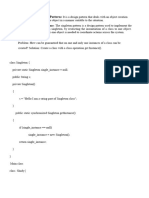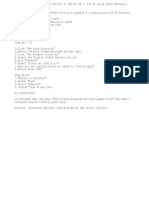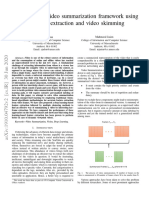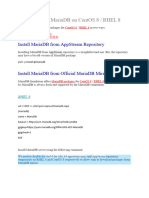Short Review: Singleton vs Factory Design
Patterns
Introduction to Design Patterns
Design patterns are proven, reusable solutions to common software design problems 1 . They serve as
“pre-made blueprints” that promote modular, maintainable and scalable code 1 2 . By providing a
standard way to solve recurring issues, patterns improve readability and ease collaboration among
developers 1 2 . Two common Java creational patterns are Singleton and Factory, each addressing
object creation in different ways.
Singleton Pattern
The Singleton pattern ensures only one instance of a class is created and provides a global point of access
to that instance 3 . It is useful for managing shared resources like configuration or logging (so all parts of
a program use the same instance).
- Advantages: Only one object exists, so resources (e.g. database connections) are shared and controlled
consistently. The global access point simplifies getting that instance from anywhere.
- Disadvantages: It introduces global state, which can make code harder to understand and test 4 .
Singletons can also be tricky in multithreaded code if not implemented with proper locking.
Example: A simple Java Singleton uses a private constructor and a getInstance() method. For example:
class Singleton {
private static Singleton instance;
private Singleton() { }
public static Singleton getInstance() {
if (instance == null) {
instance = new Singleton();
}
return instance;
}
}
Factory Pattern
The Factory pattern abstracts object creation so that a class delegates instantiation to a separate factory
class 5 . The client asks the factory for an object by specifying a type or key, without knowing the concrete
class.
- Advantages: It decouples client code from concrete classes, enhancing flexibility and maintainability 5 .
New product types can be added by extending the factory logic without changing client code.
1
�- Disadvantages: It adds extra classes (e.g. creator and product classes) which increases complexity 6 .
Overuse can make code harder to follow if the factory logic is simple.
Example: A Java factory for creating Animal objects might look like:
interface Animal { void speak(); }
class Dog implements Animal { public void speak() {
System.out.println("Woof"); } }
class Cat implements Animal { public void speak() {
System.out.println("Meow"); } }
class AnimalFactory {
public Animal getAnimal(String type) {
if (type.equalsIgnoreCase("dog")) return new Dog();
else if (type.equalsIgnoreCase("cat")) return new Cat();
else return null;
}
}
// Usage:
Animal a = new AnimalFactory().getAnimal("dog");
a.speak(); // prints "Woof"
Comparison
• Instance Control: Singleton allows exactly one instance (e.g. a single configuration manager) 3 ,
whereas a Factory can create many instances of different classes on demand 7 5 .
• Purpose: Singleton centralizes access to a single object. Factory centralizes object creation, letting
clients work with interfaces rather than concrete classes 3 5 .
• Use-case: Singleton solves problems like having one global logger or cache. Factory solves problems
like creating a family of related objects (e.g. various Shape or Animal objects) without hard-
coding their classes.
• Trade-offs: The Singleton’s global state can hinder testing and increase coupling 4 . The Factory
pattern’s extra layers improve flexibility but at the cost of added complexity 6 .
Overall, both patterns improve code organization: Singleton by managing shared state, Factory by
organizing complex object creation. They are chosen based on the specific design problem: one-for-all
access (Singleton) versus flexible object instantiation (Factory).
Sources: Descriptions and comparisons are based on design pattern references 3 5 , with insights on
advantages and drawbacks from Java pattern analyses 4 6 .
1 The Significance of Design Patterns in Software Development | by Chandan Kumar | Medium
https://medium.com/@chandantechie/the-significance-of-design-patterns-in-software-development-c1ab78e1d9ee
2
� 2 3 7 Difference Between Singleton and Factory Design Pattern in Java - GeeksforGeeks
https://www.geeksforgeeks.org/java/difference-between-singleton-and-factory-design-pattern-in-java/
4 Java Patterns, Singleton: Cons & Pros - Java Code Geeks
https://www.javacodegeeks.com/java-patterns-singleton-cons-pros.html
5 6 Factory Method Design Pattern in Java - GeeksforGeeks
https://www.geeksforgeeks.org/java/factory-method-design-pattern-in-java/
























































































